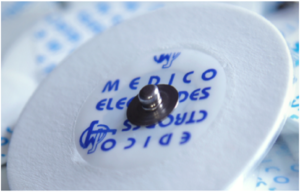
For many expectant mothers, the thought of giving birth can be both exciting and intimidating. While there are multiple childbirth methods, normal vaginal delivery is the most common and natural way for a baby to be born. This blog will offer a quick guide to normal vaginal delivery, exploring its definition, types, stages, benefits, and risks associated with this natural method.
What is a normal vaginal delivery?
Normal vaginal delivery (or normal delivery) is a childbirth process in which the mother delivers the baby through the vagina (birth canal) without surgical intervention. During this process, the muscles of the mother’s uterus contract to thin and open the cervix, allowing the baby to pass and deliver through the vagina. It usually occurs between 37 and 42 weeks of pregnancy and is the most common and safest option for the mother and the baby.
What are the types of normal vaginal delivery?
There are typically three types of normal vaginal deliveries, including:
Spontaneous vaginal delivery: It is the most common type of delivery in which labor begins naturally without using labor-inducing drugs.
Induced vaginal delivery: This type involves using drugs or other techniques to initiate or speed up labor, ultimately leading to the baby’s birth.
Assisted vaginal delivery: This method involves using tools, such as forceps or a vacuum device, to extract the baby through the birth canal.
What are the stages of normal delivery?
A pregnant woman undergoes three primary stages during normal delivery:
1. Labor
Labor is the initial stage of normal delivery, which starts with the contractions of the uterus and ends when the cervix has completely effaced (thinned and shortened) and dilated (opened) to 10 centimeters. This stage can last up to 13 hours for first-time mothers, while for those who have previously given birth, it typically lasts around seven to eight hours.
The labor stage can be further divided into three sub-stages, including:
Early labor: Early labor is the beginning stage when contractions begin, and the cervix starts to dilate and efface. At the end of this stage, the mother’s cervix may be about 4 centimeters dilated.
Active labor: Active labor begins when the cervix has dilated around 4 to 7 centimeters. The contractions become stronger and more frequent, typically lasting 60 seconds and occurring 3 to 4 minutes apart.
Transitional labor: Transitional labor is the final stage of labor before the pushing phase. In this stage, the cervix fully dilates to 10 centimeters. Contractions are intense, quick, and last longer than 60 seconds. The expecting mother can have symptoms such as shaking, nausea, sweating, and heightened emotions.
2. Pushing and the birth of the baby
The second stage of delivery, also known as the pushing stage, begins when the mother’s cervix dilates to 10 centimeters and concludes with the baby’s birth through her vagina. During this stage, the mother will have intense contractions and start pushing. The healthcare provider may guide the mother through the pushing stage, especially when she has received an epidural (pain-reducing drug) and cannot feel contractions. It may last from a few minutes to several hours. The birth process typically tends to be quicker if the mother has had a normal delivery.
3. Delivering the placenta
This final stage involves the delivery of the placenta, often called the afterbirth. It starts after the baby has been born and ends once the placenta is expelled. During this stage, the healthcare provider may request the mother a few additional pushes. It can begin a few minutes after birth and last up to 30 minutes.
It is essential to note that every woman’s labor and childbirth is unique.
Your delivery’s duration can vary significantly, from a few minutes to several hours, depending on several factors:
- The number of pregnancies you have had
- Your baby’s position and size
- Your cervix’s dilation time
- Whether you have taken an epidural or not
- Health conditions
What are the benefits of a vaginal delivery?
A vaginal delivery has several benefits for both the mother and the baby.
For the mother, the benefits are:
- A quicker recovery period
- Early lactation (breast milk production)
- Less chance of infections
- Future pregnancy complications are less likely
For the baby, the benefits are:
- Lower risk of respiratory conditions
- Better immune system function
- Higher chances of breastfeeding
What are the risks associated with vaginal delivery?
Vaginal delivery is typically a safe procedure. However, in some cases, it can cause complications, including:
- Labor arrest (labor stops or slows, and the cervix stops dilating)
- Irregular fetal heart rate
- Hemorrhage (excessive bleeding during or after birth)
- Tears in the tissue around the mother’s vagina and rectum
- Deep vein thrombosis (blood clotting in the mother’s legs or pelvis after birth)
- Postpartum preeclampsia (high blood pressure after birth)
Take A way
Normal vaginal delivery is a natural process that allows expectant mothers to give birth through the vagina. It’s essential to understand its stages, prepare well, and seek medical advice to ensure a positive outcome for you and the baby.






